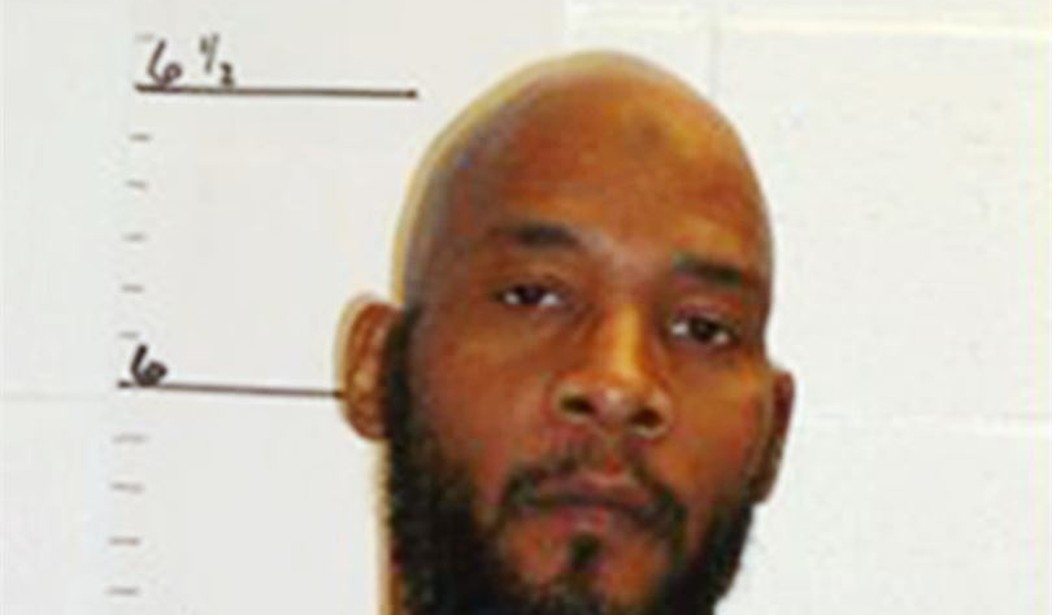As you may have heard, the state of Missouri executed a convicted murderer yesterday. His name was Marcellus Williams.
Marcellus Williams, 55, was convicted in the 1998 killing of Lisha Gayle, who was stabbed during the burglary of her suburban St. Louis home.
Williams was put to death despite questions his attorneys raised over jury selection at his trial and the handling of evidence in the case. His clemency petition focused heavily on how Gayle’s relatives wanted Williams’ sentence commuted to life without the possibility of parole...
The NAACP had been among those urging Parson to cancel the execution.
“Tonight, Missouri lynched another innocent Black man,” NAACP President Derrick Johnson said in a statement.
The claim that Williams was "lynched" was very popular on the far left:
Tonight, Missouri lynched Marcellus Williams. DNA evidence proved he was innocent. It didn’t matter. Because the United States is a serial killer of Black people. pic.twitter.com/PUgTdzm8xU
— Ibram X. Kendi (@ibramxk) September 25, 2024
DNA evidence did not prove he was innocent. An effort to re-test the murder weapon found only that the knife had been mishandled by investigators.
Testing found that DNA from Edward Magee, an investigator for the prosecutor’s office when Williams was tried, was on the knife. Testing also couldn’t exclude the original prosecutor who handled the case, Keith Larner.
Larner acknowledged Wednesday that he touched the knife at least five times, without gloves, while preparing for trial.
“I didn’t even know of any other testing that could be done,” Larner said.
Charlotte Word, an expert in forensic DNA testing, testified that because of how the knife was handled, it was impossible to know if Williams’ DNA had previously been on it.
So the DNA test didn't confirm Williams' guilt but it also didn't exonerate him. Whoever murdered the victim, Lisha Gayle, their DNA was not on the knife. But the evidence of Williams' guilt goes way beyond contaminated DNA on the weapon. Here's how the Supreme Court of Missouri described the evidence in the case back in 2003. This is a bit long but I encourage you to read all of it.
On August 11, 1998, Williams drove his grandfather's Buick LeSabre to a bus stop and caught a bus to University City. Once there, he began looking for a house to break into. Williams came across the home of Felicia Gayle. He knocked on the front door but no one answered. Williams then knocked out a window pane near the door, reached in, unlocked the door, and entered Gayle's home. He went to the second floor and heard water running in the shower. It was Gayle. Williams went back downstairs, rummaged through the kitchen, found a large butcher knife, and waited.
Gayle left the shower and called out, asking if anyone was there. She came down the stairs. Williams attacked, stabbing *467 and cutting Gayle forty-three times, inflicting seven fatal wounds. Afterwards, Williams went to an upstairs bathroom and washed off. He took a jacket and put it on to conceal the blood on his shirt. Before leaving, Williams placed Gayle's purse and her husband's laptop computer and black carrying case in his backpack. The purse contained, among other things, a St. Louis Post-Dispatch ruler and a calculator. Williams left out the front door and caught a bus back to the Buick.
After returning to the car, Williams picked up his girlfriend, Laura Asaro. Asaro noticed that, despite the summer heat, Williams was wearing a jacket. When he removed the jacket, Asaro noticed that Williams' shirt was bloody and that he had scratches on his neck. Williams claimed he had been in a fight. Later in the day, Williams put his bloody clothes in his backpack and threw them into a sewer drain, claiming he no longer wanted them.
Asaro also saw a laptop computer in the car. A day or two after the murder, Williams sold the laptop to Glenn Roberts.
The next day, Asaro went to retrieve some clothes from the trunk of the car. Williams did not want her to look in the trunk and tried to push her away. Before he could, Asaro snatched a purse from the trunk. She looked inside and found Gayle's Missouri state identification card and a black coin purse. Asaro demanded that Williams explain why he had Gayle's purse. Williams then confessed that the purse belonged to a woman he had killed. He explained in detail how he went into the kitchen, found a butcher knife, and waited for the woman to get out of the shower. He further explained that when the woman came downstairs from the shower, he stabbed her in the arm and then put his hand over her mouth and stabbed her in the neck, twisting the knife as he went. After relaying the details of the murder, Williams grabbed Asaro by the throat and threatened to kill her, her children and her mother if she told anyone.
On August 31, 1998, Williams was arrested on unrelated charges and incarcerated at the St. Louis City workhouse. From April until June 1999, Williams shared a room with Henry Cole. One evening in May, Cole and Williams were watching television and saw a news report about Gayle's murder. Shortly after the news report, Williams told Cole that he had committed the crime. Over the next few weeks, Cole and Williams had several conversations about the murder. As he had done with Laura Asaro, Williams went into considerable detail about how he broke into the house and killed Gayle.
After Cole was released from jail in June 1999, he went to the University City police and told them about Williams' involvement in Gayle's murder. He reported details of the crime that had never been publicly reported.
In November of 1999, University City police approached Asaro to speak with her about the murder. Asaro told the police that Williams admitted to her that he had killed Gayle. The next day, the police searched the Buick LeSabre and found the Post-Dispatch ruler and calculator belonging to Gayle. The police also recovered the laptop computer from Glenn Roberts. The laptop was identified as the one stolen from Gayle's residence.
The Innocence Project claimed that both of the witnesses who said Williams had confessed his guilt to them were lying for reward money. But that doesn't explain how they knew information about the case that was never released to the public or how items belonging to the victim wound up in Williams' car or how the victim's laptop wound up in Williams' possession. Those seem like significant barriers to proving his innocence.
If people want to argue that the death penalty was unnecessary in this case, as the family of the victim apparently did, that's up to them. But that's a long way from claiming Williams was an innocent man who was "lynched" by the state.








Join the conversation as a VIP Member